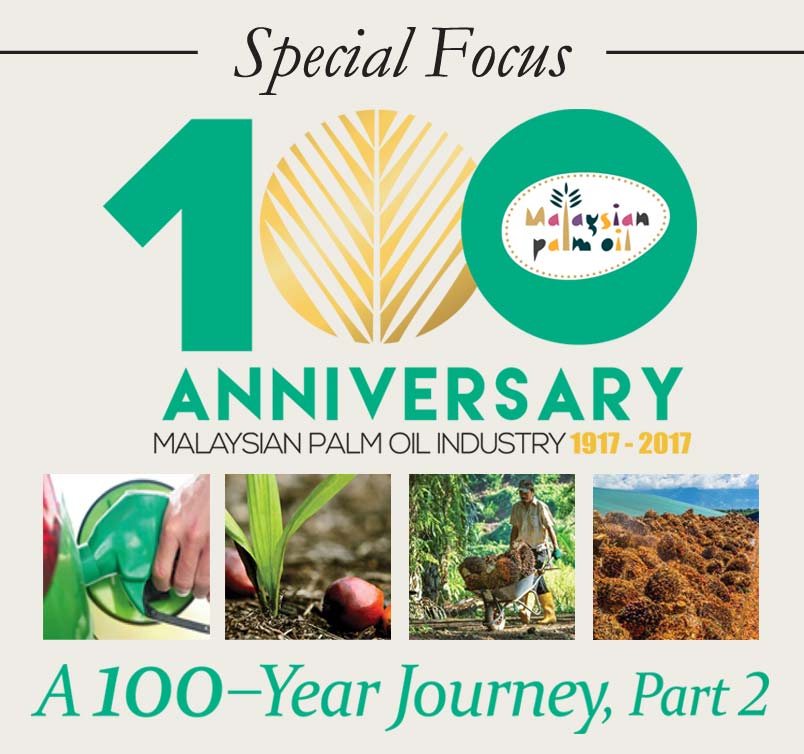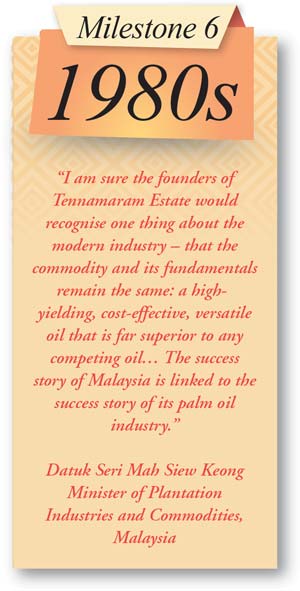



Celebrating Malaysian palm oil
June, 2017 in Special Focus, Issue 2 - 2017
Since 1917, Malaysia’s oil palm sector has recorded repeated success in taking palm oil forward as a global commodity in both food and non-food applications. From agricultural practices to research and development activities, the industry has pioneered innovations that have stood the test of time. We looked at the first five milestones in the previous issue. Five more are outlined, as we continue marking the industry’s centenary this year.

Constant supply of palm oil and palm kernel oil enabled Malaysia to become a world leader in the oleochemicals sector.
A unique feature of the oil palm is that it produces two types of oil, respectively from the flesh and kernel of the fruit. Both are edible, but can also be used as feedstock for non-food applications such as the production of oleochemicals. These are renewable and environment-friendly chemicals derived from oils and fats of vegetable, animal or marine origin. As an alternative to petrochemicals, they are used in products like surfactants, personal care items, soaps, detergents, inks and coatings.
The Malaysian oleochemicals industry flourished in the 1980s following a shift in policy away from the mining- and agriculture-based economy, to one led by manufacturing. Initially, basic oleochemicals like fatty acids, fatty alcohols, methyl esters and glycerine were produced. As global demand for oleochemicals increased and new technologies emerged, the operations were expanded to produce oleo derivatives and consumer or industrial end-products.
Benefitting from the uninterrupted supply and competitive price of palm oil and palm kernel oil, the Malaysian oleochemicals industry became a world leader. Today, with 20 plants and joint capacity of 2.7 million tonnes, Malaysia accounts for at least 20% of global production of oleochemicals.